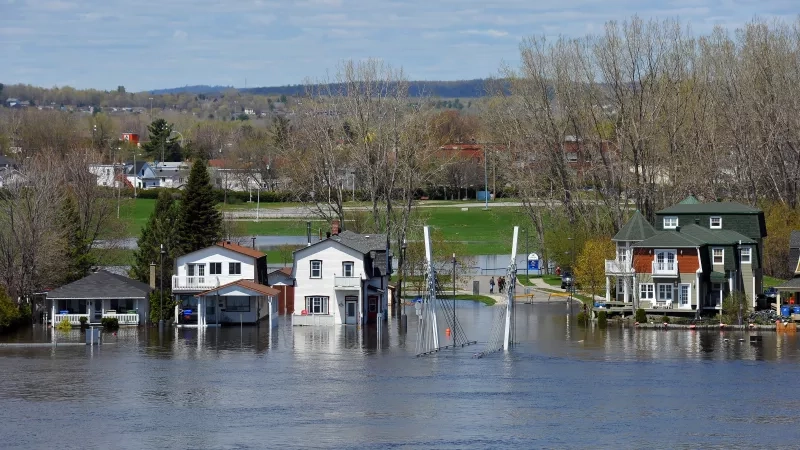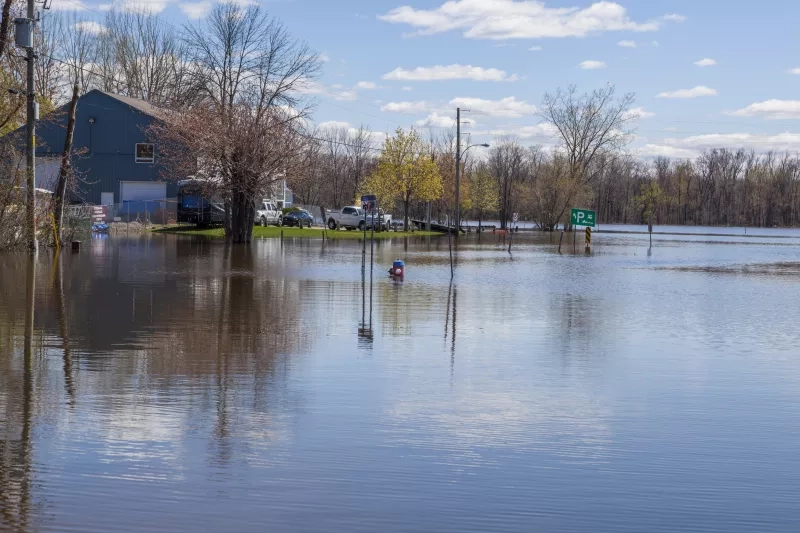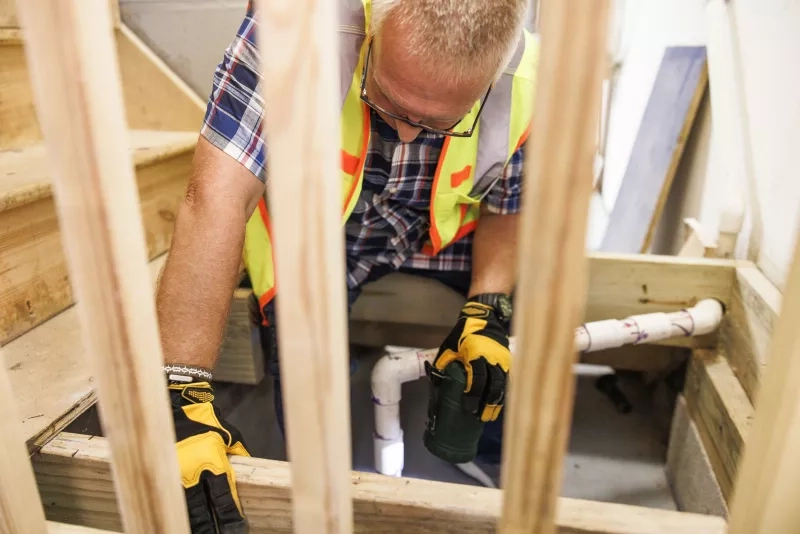
How to safeguard your home against flooding in Ontario
4 Minute Read
Ottawa is no stranger to the havoc wreaked by severe weather. We’ve all seen the images—flooded basements, soggy furniture, drywall reduced to mush and ruined personal belongings. As extreme weather events increase in frequency, these scenes become all too common. But why is Ottawa particularly prone to flooding?
Situated at the confluence of three mighty rivers—the Ottawa River, the Rideau River and the Gatineau River—our city is uniquely positioned in a flood zone. These waterways can swell significantly during heavy rainfall or rapid snowmelt, leading to widespread flooding. Numerous lakes dotting the region add to the complexity.
Understanding flooding
Ottawa’s weather, including heavy rainstorms, snowstorms, and rapid thaws, can lead to sudden increases in water levels and overwhelming drainage systems. This can cause extensive damage to homes, businesses, and infrastructure, as well as emotional distress, financial hardship, and environmental impacts. This winter, Ottawa has experienced significant snowfall, reaching around 230 centimetres. The Rideau Valley Conservation Authority has issued a flood outlook, indicating that melting snow and possible excess rain could cause water levels to rise, leading to flooding in areas.
Ottawa has faced significant flooding, notably in 2017 and 2019, causing extensive damage. These incidents highlight the need for effective flood management strategies. But here’s the thing—your home doesn’t need to be near a body of water to experience flooding. Malfunctioning municipal systems, internal plumbing issues, or severe weather can lead to flooding. With aging infrastructure and increased urbanization, homeowners must be aware of mitigation strategies to floodproof their homes.
The rising costs of flooding
In 2024, flooding and other weather-related events caused significant financial impacts across Canada. In Ontario, the torrential rains in Toronto in July led to an estimated $940 million in damages. According to a StatsCan report, extreme weather is causing billions of dollars in damage and driving up insurance premiums. In Canada, insured claims costs reached $3.4 billion in 2022 and $3.1 billion in 2023, each more than 50 per cent above the yearly average. From 1983 to 2008, insurers paid an average of $400 million per year, but from 2009 to 2023, that average rose to almost $2 billion.
“These ‘once-in-100-years’ events are happening more frequently and are becoming more severe and costly,” the report states. From 2020 to 2023, homeowner insurance premiums in Canada increased at a rate higher than inflation.
Flooding in Ottawa and Gatineau

In 2024, the high water levels in the Ottawa and Gatineau regions were primarily due to a combination of significant snowmelt and heavy rainfall, which led to the Ottawa River exceeding its capacity, causing extensive flooding. About 250 houses and businesses were affected, prompting emergency measures such as distributing sandbags. This situation underscores the ongoing challenges in flood management and the importance of effective strategies to mitigate such events in the future.
Protecting your home against flooding
Flooding can cause significant damage, but homeowners can take preventive measures.
Seal doors, windows and cracks in your basement
Cracks can develop in your basement floors and foundation due to thawing and freezing temperatures, improper grading, or expanding tree roots. These cracks can lead to water infiltration and structural issues. Most cracks can be sealed from inside your home.
Clean and maintain gutters and downspouts
These are essential for directing rainwater away from your home’s foundation. Here are some key benefits of downspouts:
-
Preventing foundation cracks, leaks and structural damage
-
Keeping basements dry and preventing mould growth
-
Preventing soil erosion and protecting landscaping
-
Protecting your roof and siding from water damage
-
Preventing ice dams in colder climates by directing melted snow away from the roof and foundation.
Regularly clean gutters and downspouts to prevent clogs, and consider using extensions to direct water at least one to two metres away from your home.Regularly clean gutters and downspouts to prevent clogs, and consider using extensions to direct water at least one to two metres away from your home.
Improve landscaping
The ground around your home should slope away from the foundation. It’s recommended that the ground be 2.5 centimetres lower for every 30 cm you move away from your foundation. If necessary, build up your foundation using solid soil, like clay, to ensure heavy rains flow away from your home. Consider installing rain gardens to absorb runoff.
Install window well covers
Low-level basement windows are prone to water pooling and seepage. Window well covers can reduce the risk of water entering your home through these vulnerable points.
Hire a certified plumber to check key systems

Weeping tile: a pipe-shaped drain that runs along the bottom of a home’s foundation. Older homes may not have these, so consider having them installed. Weeping tiles can become clogged or collapse, and a plumber can assess their condition. Installing a cleanout port can make future maintenance easier.
Sump pumps: move water from under and around your basement to outside your home. A sump pump is essential if your home has a high water table or isn’t connected to sewer laterals. Ensure your sump pump works properly, especially in a flood-prone area.
Backwater valves: allow sewage to flow out of your house in one direction. If sewage begins to move back towards your basement, the valve will close, preventing sewer backup. Some municipalities offer rebates for installing backwater valves.
Sewer laterals: are pipes that connect your home’s plumbing system to the city’s sewer system. They can become clogged with fats, oils, and grease, leading to a sewer backup. A plumber can use a camera to check the condition of your laterals and access the cleanout port to unclog them if necessary.
By taking these preventative measures, homeowners in Ottawa can better protect their homes from the increasing risk of flooding. Be vigilant, stay prepared and ensure your home is ready to withstand the challenges posed by severe weather.
This advice is intended to provide general information only. It isn’t intended to provide legal or professional advice or to be relied on in any dispute, claim, action, demand or proceeding. CAA Insurance Company doesn’t accept liability for any damage or injury resulting from reliance on this information.




